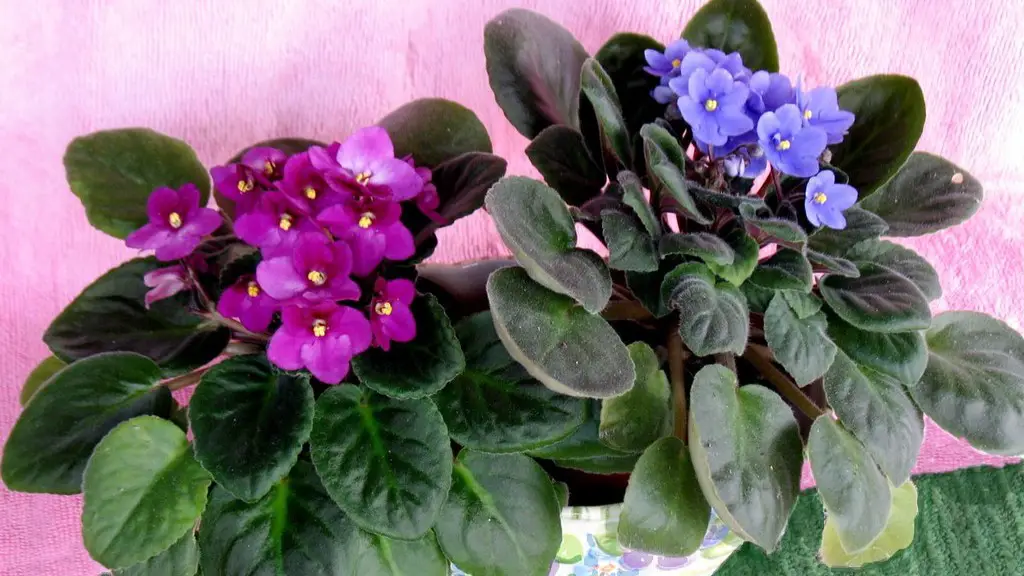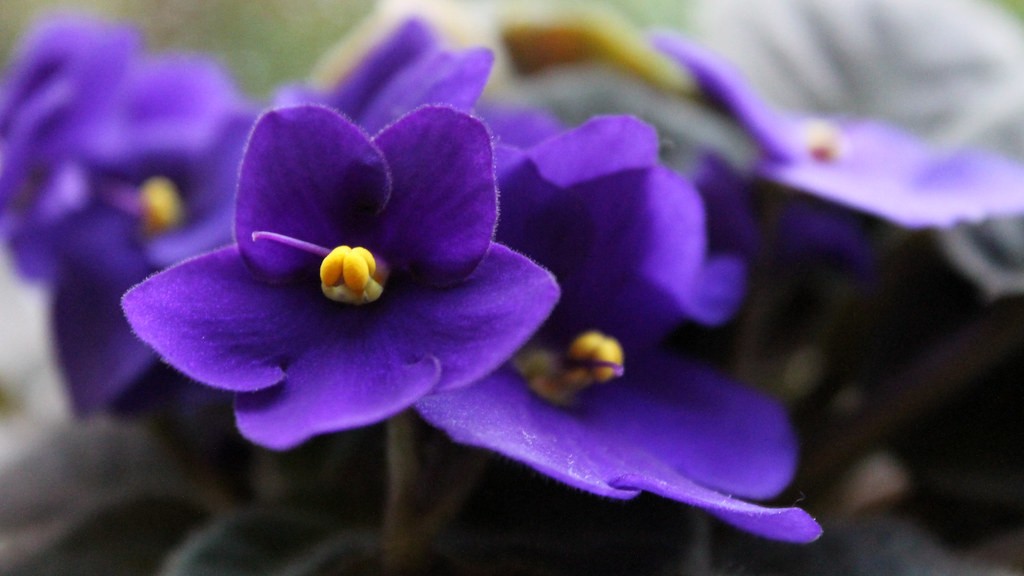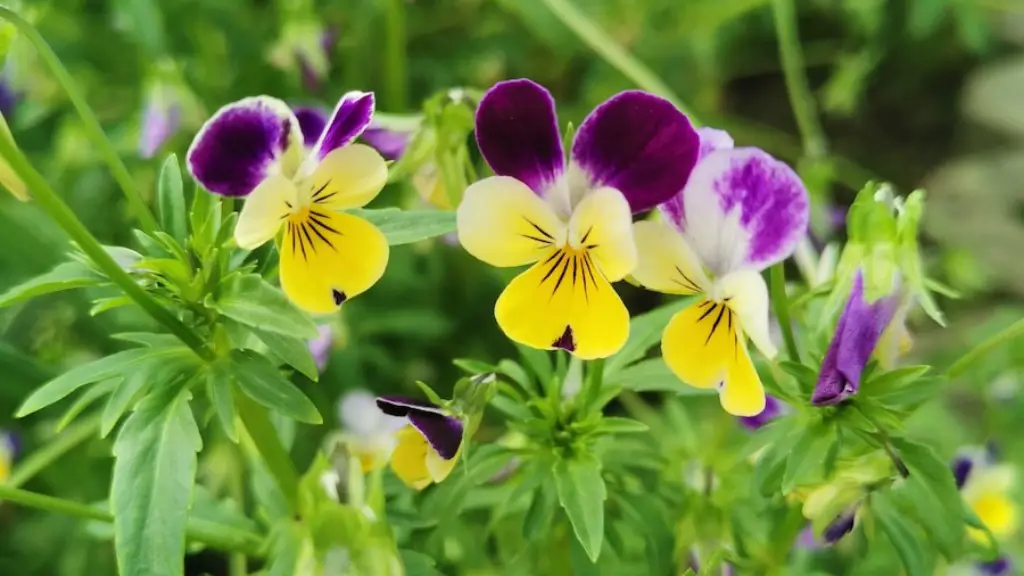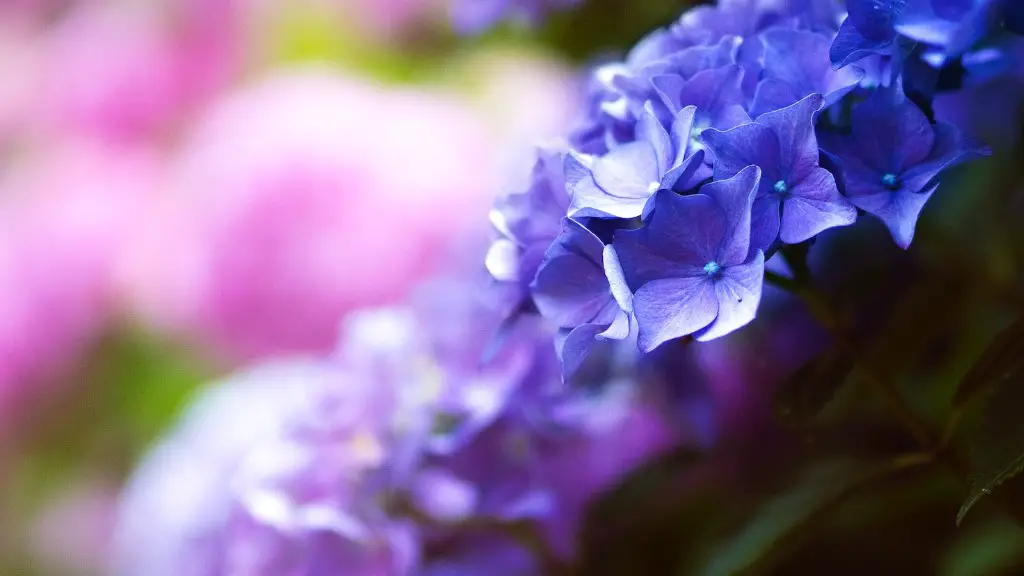African violets are a type of flower that originates from Africa. They are known for their bright colors and beautiful blooms. African violets are relatively easy to care for, but there are some specific things that you need to do in order to keep them healthy and happy. Here are some tips on how to care for African violets.
The best way to care for African violets is to place them in a spot with bright, indirect light. Water them when the soil is dry to the touch, and be sure to use a pot with drainage holes to prevent overwatering. Fertilize African violets every other week using a fertilizer made specifically for them. Lastly, make sure the potting mix is well-draining to avoid root rot.
How often do you water an African violet?
A wicking system is a great way to make sure your African violets are never over watered. The way it works is you place a wick in the bottom of the pot and water the plant from the top. The water will travel up the wick and into the soil, giving the plant the moisture it needs.
If you want your plants to have the best color and blooms, grow them in bright, indirect light. An ideal location for a plant stand is three feet away from a west- or south-facing window. Plants will still grow when situated right beside north- or east-facing windows, but leaves will be thin and spindly, and plants less likely to bloom.
How do I get my African violets to bloom again
If your African violet is not blooming, there are a few things you can do to try and encourage it to bloom again. First, make sure it is getting enough light – African violets need bright, indirect light to bloom. You can also try increasing the humidity around the plant, either by misting it regularly or using a humidifier. Another important factor is making sure the plant is getting the nutrients it needs – African violets need to be fertilized every 2-3 weeks with a water-soluble fertilizer. Finally, it is important to keep the plant stress-free – avoid drastic temperature changes and don’t overwater it. If you do all of these things, your African violet should start blooming again in no time!
It is important to water African violets properly so that they do not get crown rot. Crown rot is a serious problem that can permanently damage the plant. Do not mist the foliage, as this can cause permanent leaf spotting. Use room temperature water to water the plant.
Can you use tap water for African violets?
If you are unsure about the quality of your tap water, it is best to err on the side of caution and use filtered or distilled water for your African violets. Chlorine levels can fluctuate depending on the season and in some areas, tap water may have high amounts of chlorine, chloramines, or dissolved solids. All of these things can adversely affect your African violets.
Watering your plants is important to encourage blooming, but you don’t want to overwater them. Allow the soil around the roots to dry out before watering again. The best way to water your plants is from the bottom, using room temperature water. Place the plastic grower’s pot in a container of water and let the plant absorb the water for no more than 30 minutes.
Do African violets need bigger pots?
When you are potting your African violet, be sure to choose a pot that is on the smaller side. This is because they do best when they are slightly pot-bound. A professional tip is to use a pot that is 3-4 inches in diameter if you have a standard African violet plant.
It is true that repeatedly brushing the leaves of an African violet can cause the plant to diminish in quality and size. However, many people find the act of brushing their leaves to be therapeutic and enjoy the benefits of a healthier plant as a result. If you do choose to brush your African violet leaves, be sure to do so gently and only when necessary.
How do I know if my African violet needs to be repotted
Plants need to be repotted when they become too root-bound. This is when the roots have filled up the pot and the plant is starting to wilt. African violets need to be repotted every few years.
If your African Violet plant has been over-watered, the soil will retain too much water. This retention of water will cause the leaves and /or leaf stems to turn soft, limp or mushy. If you see the leaves and/or leaf stems turning soft, limp or mushy, it is an indication that the plant has been over-watered and you should take steps to correct the watering schedule.
Why do you water African violets from the bottom?
To keep your African Violet healthy, water its roots with lukewarm water—around 70 degrees—and allow the plant to soak up the water for an hour or so. Keep the roots moist, but never soggy, for best results.
If you’re looking for the best pots for African violets, then you can’t go wrong with the Mkono 3 Pack Self Watering Plastic Planter, the Ceramic Pot with Saucer, the Blue Self Watering Ceramic Planter, the Aquaphoric Self Watering Planter, the Self Aerating Self Watering Pot, or the Terracotta Pot. All of these pots are specifically designed to help your African violets thrive, and they come in a variety of styles to suit your needs.
How do I make my African violets happy
African violets are a type of plant that need indirect sunlight in order to thrive. Direct sunlight can actually burn the leaves of these plants, so it’s important to choose a north- or east-facing window if you want to grow them indoors. You should also keep the plants away from cold glass, and rotate the pot once a week so all leaves have a chance to absorb light. In the winter months, you can extend the amount of daylight that the plants receive by placing them under a grow light.
African Violets are beautiful, delicate plants that need fertilizer to stay healthy throughout the year. During the spring and summer, you should fertilize your African Violet once every two weeks. In the fall and winter, you shouldn’t fertilize the plant at all to prevent over-fertilizing.
What is the best way to water African violets?
The best way to water an African violet plant is from the bottom up. This allows the soil to soak up the water through the drainage holes at the bottom of the pot, and provides the plant with a consistent supply of moisture.
Coffee grounds are slightly acidic and contain nitrogen, which helps plants grow healthy foliage. Occasionally sprinkling used coffee grounds on top of your African violet potting soil can be good for the plant.
Final Words
To care for your African violets, you will need to water them regularly and provide them with bright, indirect light. Be sure to water the soil, not the leaves, and allow the soil to dry out slightly between waterings. fertilizer every two to four weeks. During the winter months, you may need to water them less frequently.
To care for an African violet, water the plant when the soil is dry to the touch. Be sure to use tepid water, as cold water can shock the plant. The African violet prefers bright, indirect light. placement in a south-facing windowsill is ideal. Feed the plant with a specific African violet fertilizer throughout the growing season. Lastly, be sure to gently brush the fuzzy leaves of the plant to rid of any dust or debris. With proper care, your African violet will thrive.





